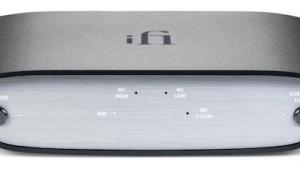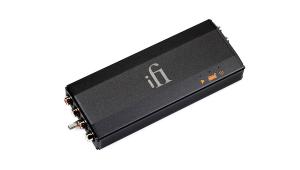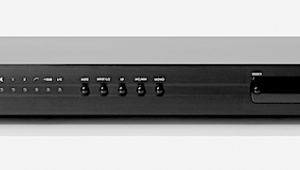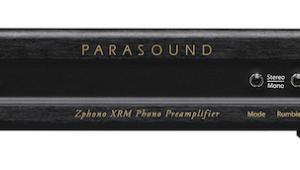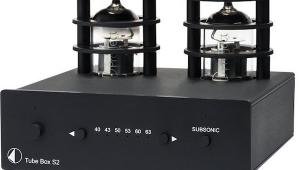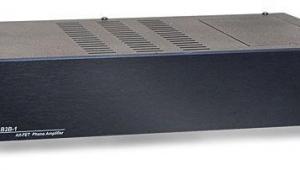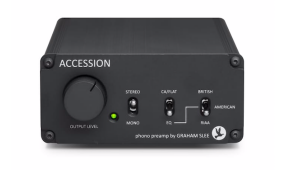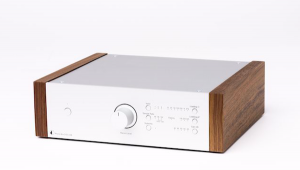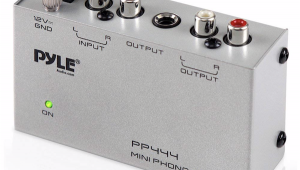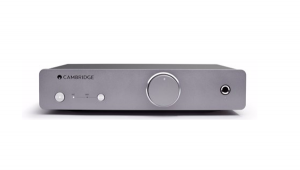and very informative. A terrific way to improve listening skills as well.
Thanks as always, Michael. Can't wait for the MC test.
Eight Phono Preamps Identified and Votes Tallied!
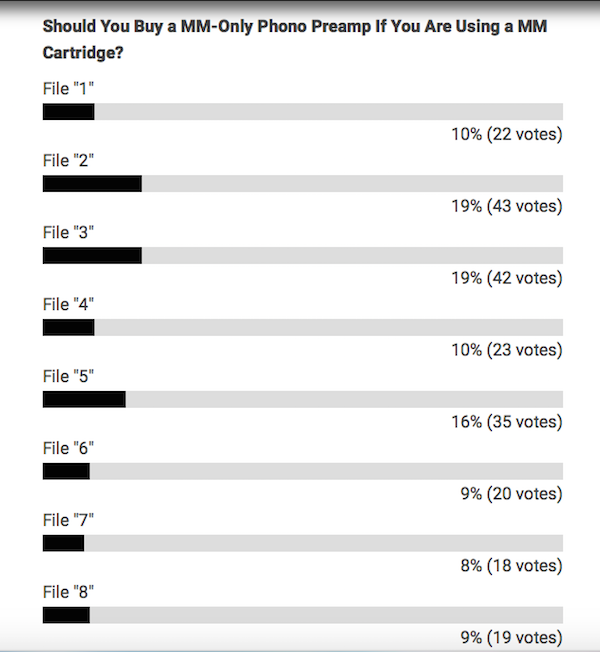
The 8 phono preamplifiers are compared for features but not sonics here.
The image at the top shows the results. Files "2" and "3" tied for top vote getters at 19% with "2" edging out "3" by one vote. File "5" came in second with 16%, while Files "1" and "4" came in 3rd with 10% ("4" edged out "3" by 1 vote) and the rest lagged behind with between 8% and 9%.
So, which was which?:
File "1"is the $999 AVM Inspiration p 1.2 (MM/MC)
File "2" is the $999 Graham Slee Era Gold V (MM only)
File "3" is the $4500 Lehmann Silver Cube (MM/MC)
File "4" is the $399 Music Hall pa 2.2 (MM/MC)
File "5" is the $675 Jasmine Audio LP 2.5DU (MM/MC)
File "6" is the $895 Lejonklou Gaio (MM only)
File "7" is the $999 Musical Fidelity MX-VYNL (MM/MC)
File "8" is the $499 Micro iphono2 (MM/MC)
So the winners according to AnalogPlanet reader/listeners were the $999 Graham Slee and the $4500 Lehmann Silver Cube!
So if you have a MM cartridge, clearly a MM only phono preamp makes sense (at least to those who voted for the Slee!. You can always add a step up transformer or a "head amp" later.
My "blind" listening put the Lehmann Silver Cube at the top, the Graham Slee 2nd, the Lejonklou 3rd, and the AVM, iPhono2 and Musical Fidelity MX-VYNL pretty much tied for 4th.
The Jasmine did much better among AnalogPlanet listeners than I was expecting. I thought it was rhythmically weak, with soft bass attack. And the Music Hall was at the bottom especially in terms of both bass performance and dynamics,
However, the Music Hall pa 2.2 comes with an enormous asterisk in that for $399 you get a MM/MC phono preamplifier, an A/D converter, a headphone amp and a volume control, which means it can also be used as a preamplifier, especially since it has an "aux" input as well! Yet it scored as well as some of the far more expensive phono preamps with far fewer features.
So draw your own conclusions. I hope you enjoyed this feature! As for the MC performance of the units with MC inputs, that will be coming up soon.
- Log in or register to post comments

I had the music hall and the ifi in my house at the same time and i preferred and kept the ifi. To borrower Mike's word, the ifi was much more fynamic and i like it's configurability.

As an owner of the Graham Slee Era Gold, I can vouch for it's greatness, I've played many hundreds of records through it. (This is also the second time a piece of gear I own has come in 1st in one of your blind listening tests, hooray.) But I still believe these tests don't really tell us a whole lot, except what the gear will sound like, combined with the particular record you chose to play, and combined with the other gear you used... it's all about synergy.
On Graham Slee's website, he mentioned many cartridges he uses while developing/designing his gear. One was a Goldring 1042. I have it, sounds great. But I didn't really like it paired with the Era Gold, at least not for most of the records I tried playing with that combination. Graham also told me in an email that he didn't like Grados, or maybe it was moving iron cartridges in general, and he didn't think it would be a good pairing. Well, my Grado Master reference 1, combined with the Era Gold produced awesome results on a wide number of records. It's all about synergy, and the only way to really know how any piece of gear will sound is to listen, with lots of different records, knowing that changing any other piece of gear can have a big impact on the sound. This is why I've learned not to form any opinions about any gear, until listening to a whole bunch of records played through it. Still, these blind tests are harmless. :-)

... GS that current production versions of the 1042 didn't seem to perform as well as older ones. He was impressed with an Ortofon 2M Black and even more so, initially, with an Audio-Technica AT150ANV. Following more extended listening, he seemed to end up preferring the Ortofon.
https://www.hifisystemcomponents.com/forum/ortofon-2m-black-ordered_topi...

Thanks for that link. My Goldring 1042 is about 5 years old, so not sure if that qualifies as "current production" version or not, not that it really matters (to me, anyway). I also own the AT150ANV, and like it alot (I now see that it's hard to find, being a limited production run, and worth more than what I paid...) but again it's all about synergy, and that cart sounds fantastic on some records, but not others. When I talk about synergy, I'm not just talking about synergy between components, but more importantly, between components and records... records of different music will sound different of course, and some sound better with a particular combination of gear. Of course most of us can't afford to have multiple turntables with multiple arms and carts on them, so we have to try and find one combination that sounds best on the biggest number of records we play.
I'm also glad to know his thoughts on the 2M Black. It gets mixed reviews, although most I've seen are very positive, which tells me that I simply need to try one for myself (which I think I will soon).

... one of the Audio Note (by Goldring) IQ series cartridges might also appeal to you:
http://www.audionote.co.uk/products/analogue/cart_iq_1_01.shtml
http://www.audionote.co.uk/products/analogue/cart_iq_2_01.shtml
http://www.audionote.co.uk/products/analogue/cart_iq_3_01.shtml
See the following review of the IQ3 and note the comments vis-à-vis the 2M Black:
http://www.tnt-audio.com/sorgenti/audionote_iq3_e.html
Trying to match different cartridges to different types of music or recordings in order to achieve the sort of sound quality that suits you is one approach.
Or you can choose one cartridge that seems to provide the closest sound to that of the master tape and use that for everything - while realizing that you may not always especially like what you hear from each disc.
You may recall this article:
http://www.regonaudio.com/Stanton881AudioTechnicaATML70.html
The (now discontinued) Stanton 881 and the Audio-Technica ML-170 were deemed by several recording engineers to reproduce their records with a sound quality closest to that of their master tapes. One might conclude that the performance of the AT150ANV is not far removed from that of the ML-170; and perhaps the same might apply to the current VM760/750/740 models.

"Trying to match different cartridges to different types of music or recordings in order to achieve the sort of sound quality that suits you is one approach."
To be clear, that is not at all my approach, in case you thought that's what I meant. I talked about finding the right cart/preamp combination that sounds best on the biggest number of records we play, and for me that includes every type of music under the sun. So the goal is to find a combination that sounds good with an Ed Rush & Optical drum 'n bass record, a Music Matters Blue Note 45RPM reissue, an AC/DC record, classical records, and so on.... and I think I've found that combination.
Also, picking a cartridge that provides the closest sound to a master tape is an impossible endeavor... We mortals don't listen to master tapes. I've read before, people aim to get something "neutral", but the term neutral is meaningless without something as a reference. I'm anticipating a contrary retort, so in advance of that and not wanting this to devolve into audiophilia fodder (which would be my own fault), I'll just agree to disagree. :)

Those results look like they may be totally random depending on the actual number of people who participated in the test. How many people participated?

I see the hard numbers next to the percentages. 222 total.

Dedicated power supply and discrete design probably contribute good sound to the silver, so to speak.

I have an iFi iPhono2, among other phono pres less and more expensive. I added an sBooster linear power supply to it, and it went from being merely good to one of the better phono pres I've heard at any price under the stratosphere.

I am quite happy with the outcome, as all three of my top three phono stages made reader's top 3 too, except that in my ranking Jasmine was placed before Lehmann. However, since I am using MC systems, the Slee is not an option for me.
I am particularly happy that I did not rank the Musical Fidelity better. Half a year ago I tested it against more expensive phono stages, namely the Lehmann Decade and the Chord Symphonic, and it clearly lost out (the last one won, by the way). So at least I am reasonably consistent in my assessments... :)

Your top 3 which was the top 3 out of 8 only combined for 54% of the vote. 3 out 8 is one short of half the units tested. So nearly half the units won with just over half the votes. It does look pretty random to me. One could just as easily look at this and say wow the $4,500 dollar unit was beat 180 times out of 222 by far less expensive units. The top vote getter lost 179 times out of 222. How does that not look kind of random?

Hi Andy, I can see your point, but I do not share your conclusion. The likelihood that my chosen top 3 phono stages end up as the top 3 in the general room is very small indeed. What you are saying is that there are only relatively small differences in terms of votes across the various ranks. I would interpret that as an indication of different tastes as well as combination of stereo systems. I found comparing so many options was really difficult. Thus, I spent quite a bit of time and effort on it. Not everyone who voted did that, so some variation will likely be due to that. One could call that 'random' of course!

I would prefer to characterize it as an impression rather than a conclusion. It *looks* to me to be fairly random. I'd rather see a proper statistical analysis before drawing any conclusion and even if a statistical analysis were to call this a null of some sort I'd rather see more testing than draw a conclusion. There are a lot of variables here and I think perhaps Mike may have made a mistake in having so many samples in one comparison. But I applaud his efforts. I like that he does these comparisons and I hope he does more.

Sorry for getting your name wrong, Scott! Yes, I completely agree with the sentiment you are expressing. I cannot claim to be an expert, listening to music is really only a hobby for me. But I have done a number of listening tests over the years and there were many cases when it was difficult to come to a conclusion. Very often I was not sure whether the conclusion was 'absolute', in the sense of one component or record dominating another or whether it was not more like 'with my listening room and my other components, A sounded better than B'. And even that may not be the correct conclusion, as often I had to face a trade-off, for instance, like 'A's bass response is more impressive, whereas B's high are really sweet'. Which one is better? However, I believe mere trying to listen hard makes you aware of things you would not have heard otherwise and that seems to be something useful to me.

While Graham has professed a preference for moving magnets, he does usually make a moving coil version of his designs. I have the Reflex C, which is a step up from the ERA Gold tested here, in the MC design, and am very happy with it. However I never see a review of it. Hopefully Mikey will use it if he repeats this test with MC head amps.

As I am sure Mikey is aware, the Graham Slee Era V Gold design is at least ten years old. The subsequent Reflex (which I think he reviewed) is even better, and the recent Accession is absolute killer. It implements a two-stage RIAA equalization circuit that appears to be unique. Anyway, I have found the Graham Slee MM stages used with a variety of step-up transformers to be excellent with MC cartridges. (Their Elevator headamp is very good, but I have experienced RF problems.)

Thanks Mikey. I've been using the Era Gold's older MC brother the Reflex C for the past 7 years now and I've found it one of the best performing and by far the best value Phono amp I've ever had in my system.

I, too, would love to read a review by MF of the Graham Slee Reflex M. I stepped up from a heavily modded Jolida JD9 to the Reflex M paired with a Dynavector 20x2H and could not be happier.

The builders of the Jasmine LP2.5 use a small value coupling capacitor between the first and second gain stage, as a "rumble filter". It would be better if it were defeatable.

It looks like there is a "background" in the data of about 20 votes. This either means that 20x8=160 of the voters preferred each phono-pre equally, regardless of price, transient attack, etc, or those individuals couldn't tell any of them apart and were just picking one at random, or some combination of the two effects. I assume that most people who couldn't tell them apart didn't bother to vote, though.
How would you rank the importance of the following factors? Here is my guess:
recording/mastering quality
phono cartridge
speakers
tone-arm
deck
phono pre
line stage
amp
cables
The phono pre is possibly too far down the list for it to have much of an impact on many systems, and component matching with the speakers, in particular, might explain why the 'background' effect,
Can't wait for the MC and transformer editions of this survey!

Thanks for the testing. Although not statistically powerful there are usually one or two nuggets in there and they are fun to follow. Thanks again.






